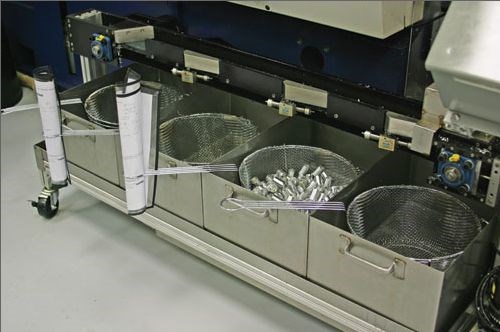Lights out Output
For lights-out machining, being able to efficiently backtrack from smaller batches if something goes wrong helps identify when an error occurred.
Share






For lights-out machining, being able to efficiently backtrack from smaller batches if something goes wrong helps identify when an error occurred.
Everybody is trying to go lights out. It just makes sense to make parts virtually labor-free for a shift or two. So here’s a question: When you turn the lights on, what do you have? Well, hopefully you have a large quantity of good parts.
Usually, longer-running parts are delegated to untended machining. Consequently, at the end of the shift there are bins full of machined parts. Although I’m sure your shop has never experienced this, sometimes something happens in the machining process that causes the part to go out of spec sometime during the night.
The problem is figuring out when the incident occured and how many parts are affected. Short of inspecting the entire batch to find these renegade parts, there may be a simpler way to at least narrow the search. I came across one such device in a lights-out shop in Chicago that runs its eight-spindle Tornos untended. Of course, a multi-spindle makes a lot of parts quickly.
These guys came up with a programmable part separator, built in-house. Finished parts can be diverted to or four discharge baskets at programmed intervals. For lights-out machining, this nifty device allows the shop to backtrack from smaller batches if something goes wrong, and it helps identify when an error occurred.
Read the full story here.
Related Content
-
Lean Approach to Automated Machine Tending Delivers Quicker Paths to Success
Almost any shop can automate at least some of its production, even in low-volume, high-mix applications. The key to getting started is finding the simplest solutions that fit your requirements. It helps to work with an automation partner that understands your needs.
-
4 Steps to a Cobot Culture: How Thyssenkrupp Bilstein Has Answered Staffing Shortages With Economical Automation
Safe, economical automation using collaborative robots can transform a manufacturing facility and overcome staffing shortfalls, but it takes additional investment and a systemized approach to automation in order to realize this change.
-
Increasing Productivity with Digitalization and AI
Job shops are implementing automation and digitalization into workflows to eliminate set up time and increase repeatability in production.





















